The tent caterpillars (Malacosoma spp.; Lepidoptera; Lasiocampidae) are distributed widely in tropical and temperate regions. Originally, tent caterpillars were placed in the genus Bombyx, but in 1820, the genus was changed to Malacosoma (Latin word: malakos -soft; soma – body). The common name of the tent caterpillar is derived from the tent-like silk structure built by larvae on the tree branches. The tent caterpillars are distributed in Eastern and Western Europe, India, China, Japan, and Russia. In North America, six species of tent caterpillars are found (Table 1). The Forest Tent Caterpillar and Eastern Tent Caterpillar occur in Georgia.
Tent caterpillars are defoliators of a wide range of host plants, including hardwood and fruit trees. The presence of caterpillars, their frass, and damage can cause nuisance and reduce the aesthetic appearance of the trees and shrubs. Although this pest does not directly kill trees, defoliation during outbreaks causes branch dieback and reduces growth, ultimately leading to tree death.
Table 1. American species of tent caterpillars:
| Common name | Scientific name |
| Forest tent caterpillar | Malacosoma disstria |
| Eastern tent caterpillar | Malacosoma americanum |
| Western tent caterpillar | Malacosoma californicum |
| Southwestern tent caterpillar | Malacosoma incurvum |
| Pacific tent caterpillar | Malacosoma constrictum |
| Sonoran tent caterpillar | Malacosoma tigris |
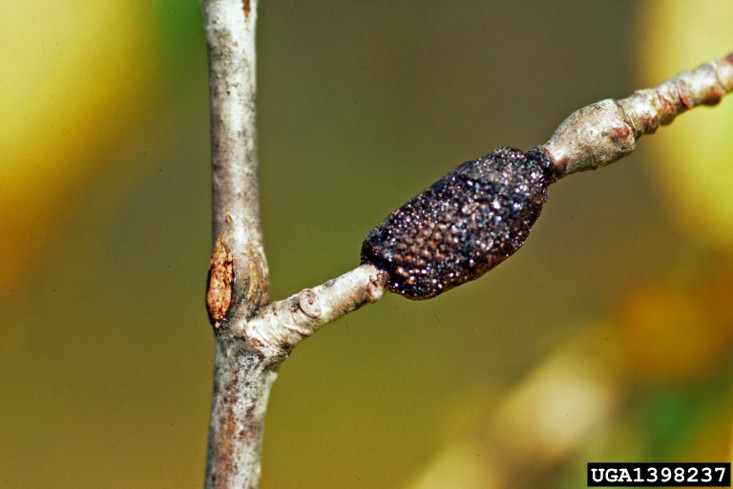

Fig. 1. Forest tent caterpillar egg masses. Photo by Steven Katovich, Bugwood.org; Fig. 2. Forest tent caterpillar newly hatched larvae, E. Bradford Walker, Vermont Department of Forests, Parks and Recreation, Bugwood.org
Description
The tent caterpillars lay eggs in masses, and shiny, dark brown or black egg mass encircles the stem or twig of a tree (Fig.1). The newly hatched caterpillars are 3 mm long, black, and contain fur-like setae on the body (Fig.2). The coloration, markings, and patterns on late stages of caterpillar vary by species. The Eastern tent caterpillar (ETC), late stage caterpillars are black with blue and white markings and a continuous white line on back background (Fig.3). The forest tent caterpillars (FTC) are similar in appeared as ETC, except they have a white dot instead of white continuous line on the background. The Western tent caterpillar (WTC) has a blue-white stripe on the with black bands (Fig.4). In the spring and early summer, the most tent caterpillars build a tent-like structure with silken web on branches of trees (Fig.5). In contrast, forest tent caterpillars construct a silken mat on leaves. The newly hatched caterpillars built a tent on branches. The tent covers the larvae, protecting them from predators such as birds. It also helps shield them from harsh weather conditions by facilitating thermoregulation and assists with larval molting.
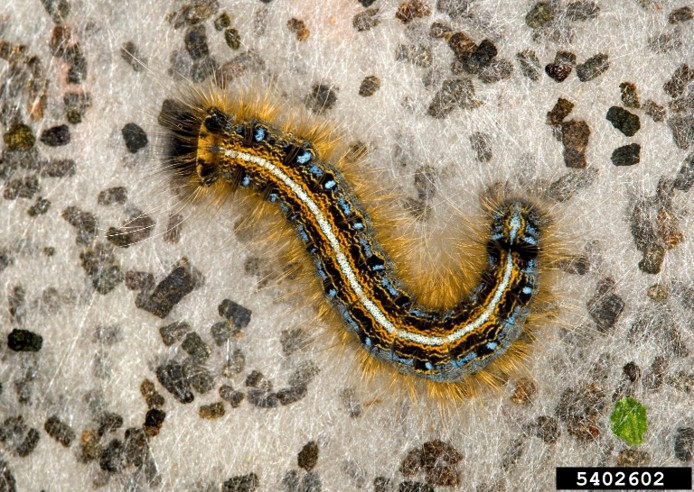
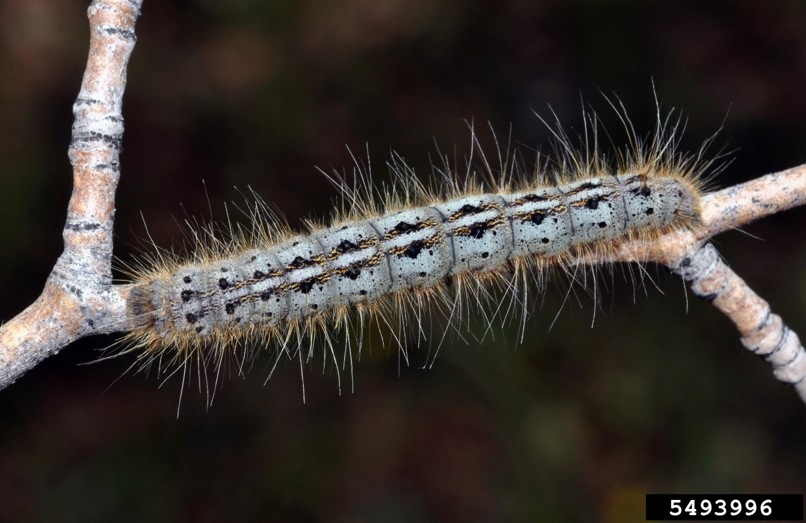
Fig. 3. Eastern tent caterpillar larva. Photo by David Cappaert, Bugwood.org; Fig. 4. Western tent caterpillar larva. Photo by William M. Ciesla, Forest Health Management International, Bugwood.org

Life cycle
All the tent caterpillars have a similar life cycle. They complete one generation in a year. A single tent caterpillar adult female lays only one egg mass annually. An egg mass of 100-350 eggs encircles the twigs in mid-summer. Egg masses overwinter and hatch in April and July in the southern and northern US, respectively, which coincides with tree bud expansion. Colonies of first instar caterpillars stay together and spin a silken web around a branch junction or on trunks. Instead of tents, the FTC produces a silken mat on branches or trunks where the caterpillars rest. The caterpillars from 1st to 4th or 5th stages are gregarious and feed on foliage. The size of the tent increases as the caterpillars grow. The tent serves as an area for the caterpillars to rest. They leave the tent during the day for food and return at night. The last larval stage becomes solitary in habit, wanders off, and feeds individually. Tent caterpillars develop through 5-8 larval stages. Additional larval stages are added if they feed on poor-quality tree materials until they reach the optimal size for pupation. Larval development is completed within 4-7 weeks. Late-stage caterpillars pupate inside the silken cocoons at bark crevices, leaves, on the ground, and under any structure (Fig . 6). Moths emerge from those cocoons in May or June/July in the southern and northern USA, respectively. The adult moths of tent caterpillars are yellowish in FTC (Fig. 7), brown in ETC (Fig. 8), and black to greyish in WTC (Fig. 9).


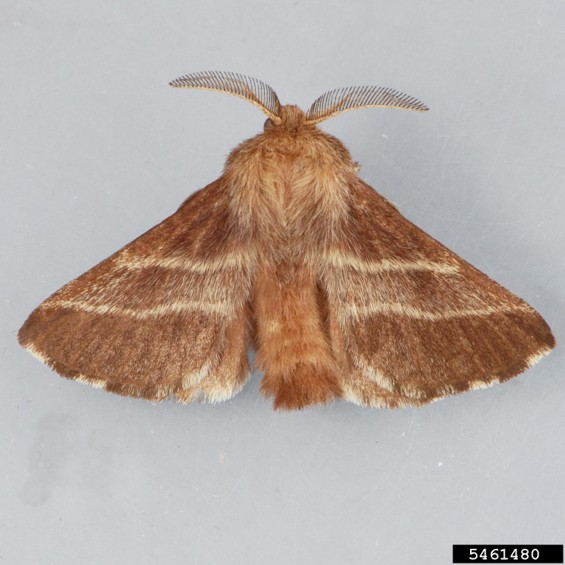
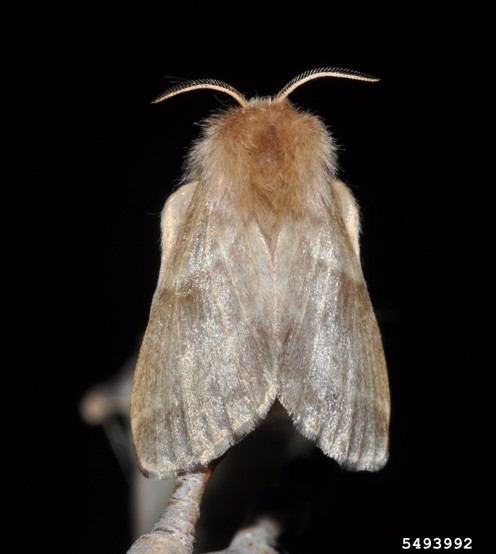
Fig . 7. Forest tent caterpillar adult. Photo by Mark Dreiling, Bugwood.org; Fig. 8. Eastern tent caterpillar adult. Photo by Mark Dreiling, Bugwood.org; Fig. 9. Western tent caterpillar adult. Photo by William M. Ciesla, Forest Health Management International, Bugwood.org
Damage
Tent caterpillars feed and defoliate, beginning from early April to late June. During pest outbreaks, defoliation (Fig .10) causes branch dieback, growth reduction, and occasionally kills the tree. If the population is abundant, tent caterpillars may strip the trees and migrate to new tree hosts. The tent, colonies of caterpillars (Fig. 11), and silken cocoons on trees and shrubs reduce the aesthetic appearance of landscapes.
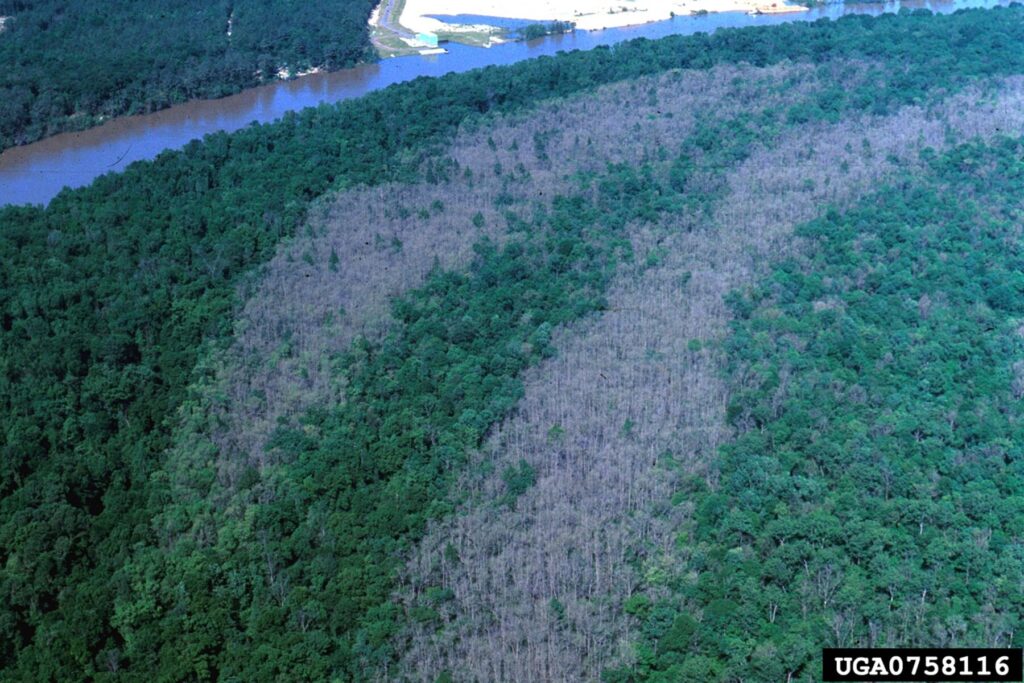
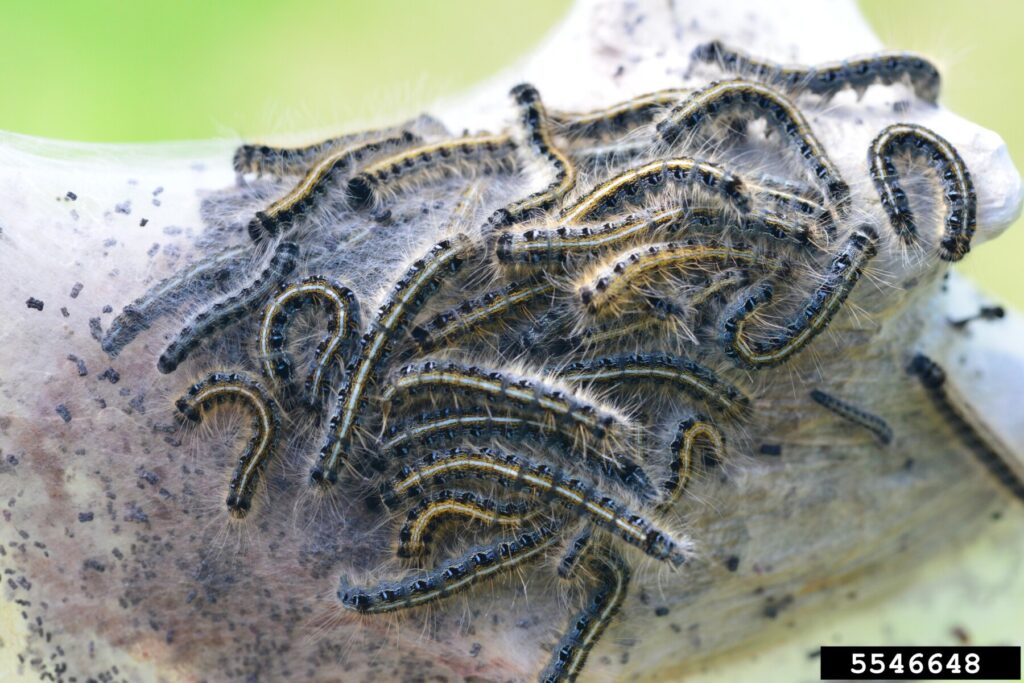
Host range
Tent caterpillars have a wide host range. FTC feed on trees, such as trembling aspen (Populus spp.), alder (Alnus spp.),birch (Betula spp.), cherry (Prunus spp.), sugar maple, oaks (Quercus spp.), elm (Ulmus spp.), basswood (Tilia americana L.), water tupelo (Nyssa aquatica L.), blackgum (Nyssa sylvatica Marshall), and sweetgum (Liquidambar styraciflua L.). It also feed on shrubs such as willow (Salix spp.). Meanwhile, Eastern and Western tent caterpillars feed on black cherry, apple, crabapple, pear, and some other fruit trees. WTC also feeds on shrubs, including bitterbrush (Purshia tridentata), California lilac (Ceanothus spp.), mountain mahogany (Cercocarpus spp.), and some other ornamental shrubs.
Management
In ornamental landscapes, such as residential or commercial settings, tent caterpillars can be managed by destroying egg masses in the winter, as egg masses are visible on defoliated trees. Developing tents can be physically destroyed as new tents appear on the trees. The tent caterpillars can be trapped using a sticky collar wrapped around the tree trunk to capture migrating caterpillars. In residential areas, caterpillar colonies and cocoons can be dislodged by using high-pressure water sprays.
Several insecticides are effective on tent caterpillars. Microbial insecticides such as BT product (Bacillus thuringiensis var. kurstaki), spinosad, and baculovirus are effective on younger stages of tent caterpillars. Insect growth regulators, such as diflubenzuron, can used; however, it is not recommended near water, as it can negatively affect aquatic arthropods. Biorational insecticides, such as azadirachtin and insecticidal soap, effectively reduce tent caterpillar populations. Synthetic insecticides, such as organophosphates (malathion and acephate), pyrethroids (permethrin and bifenthrin), and carbamates (carbaryl) are also effective on larvae, and they can be spot-applied. Younger larvae are more susceptible to insecticides than caterpillars in late stages. All insecticides should be used according to the label.
References
Fitzgerald, T. D. (1995). The tent caterpillars. Cornell University Press.
Schowalter, T. D. (2017). Biology and management of the forest tent caterpillar (Lepidoptera: Lasiocampidae). Journal of Integrated Pest Management, 8(1), 24.
Western Tent Caterpillar, U.S. Forest service, 2011.
https://www.fs.usda.gov/Internet/FSE_DOCUMENTS/stelprdb5303047.pdf
Fitzgerald, T. D., & Willer, D. E. (1983). Tent-Building Behavior of the Eastern Tent Caterpillar Malacosoma americanum (Lepidoptera: Lasiocampidae). Journal of the Kansas Entomological Society, 56(1), 20–31. http://www.jstor.org/stable/25084365
Forest Tent Caterpillar, U.S. Forest service, 2011.
https://www.fs.usda.gov/Internet/FSE_DOCUMENTS/stelprdb5343832.pdf
Day, E. (2020). Eastern Tent Caterpillar, Virginia Cooperative Extension, Virginia state university.
https://www.pubs.ext.vt.edu/444/444-274/444-274.html
Cooke, B. J. (2024). Forest tent caterpillar (Lepidoptera: Lasiocampidae) across Canada, 1938–2001: I. Periodic outbreaks; episodic impacts. The Canadian Entomologist, 156, e8.
Ruiu, L., Mannu, R., Falchi, G., Braggio, A., & Luciano, P. (2013). Evaluation of different Bacillus thuringiensis sv kurstaki formulations against Lymantria dispar and Malacosoma neustria larvae infesting Quercus suber trees. Redia, 96, 27-31.